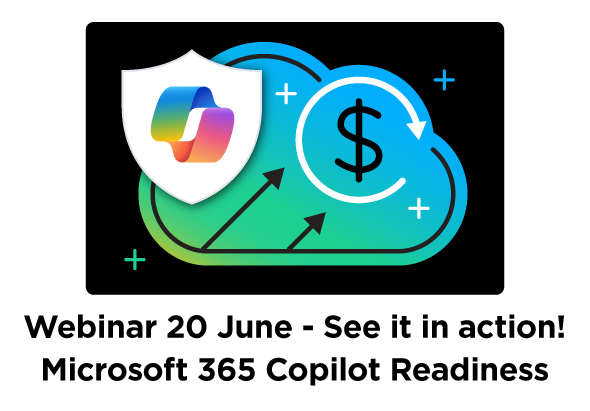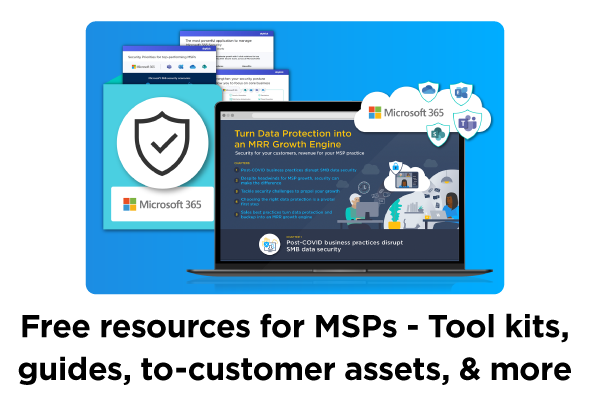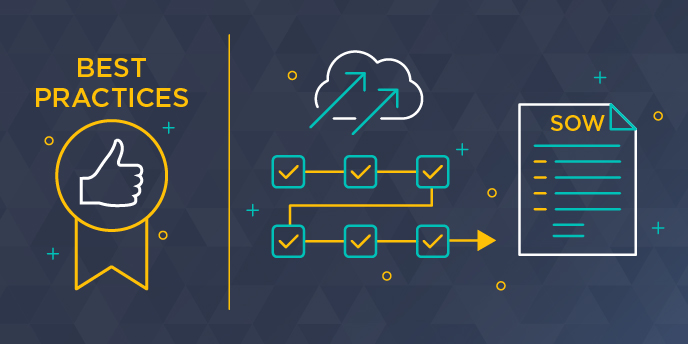Best practices for creating an email migration project statement of work (SOW)
In this second blog post in our migration sales success series we explore best practices and resources to create a statement of work (SOW) for a migration project.
SOWs can have a big impact on your bottom line
So, a new SMB customer has just signed on with your business for an email migration to Office 365 and they’re ready for you to submit a formal SOW. You may ask yourself, where should I start? What information should I include? How thorough do I need to be? Will my customer even read this?
You’re not alone. Many MSPs have a similar internal dialogue when considering the best approach for building a SOW. Creating one isn’t an easy task – often consuming your valuable time and resources. Not to mention, if it goes wrong, it can have some massive effects on your project costs, operations and customer satisfaction.
But done right – it can help you reduce the threat of scope creep while ensuring appropriate customer expectations and project profitability. In this blog, we’ve pulled together some best practices to help you do just that – create a SOW that works with you, and your customers.
Start by determining your migration pricing strategy
Every migration project is unique. Some may include variables outside a standard migration that require additional manual effort, while others may offer opportunities to deliver additional services aligned with the migration project. Some will need the support of your more senior technical engineers – and others may only require a project manager. As illustrated in this table, there are a variety of ways to build a SOW and determine the price of a migration, from fast and simple to more methodical and complex.
-
- Fast & simple: While a fast and simple approach may be easy to adopt – it can introduce risk and diminish profit margins, especially with more complex migration projects.
-
- Accurate, but time intensive: On the other hand, a very detailed approach may help reduce the risk of scope creep, but also takes more time and resources (often requiring expertise outside of the sales team) – slowing the pre-sales process.
-
- Balance of speed and accuracy: In most cases, we’ve observed that Partners that use the right balance of speed and accuracy can optimize for both profitability and scalability. We recommend you start with SkyKick’s Key Complexity Factors to consider whether the project is going to be a mainstream migration or if there are complexities that may require extra resources, time, or effort. Using the provided factors (you can add your own, too), create a few standard migration prices, based on estimated complexity or manual effort. This empowers the sales team to quickly and easily price migrations using highly informed estimation, rather than requiring additional resources, processes or customer meetings.
In summary, when creating a SOW, price the migration based on the strategy you choose to implement – and ultimately, ensure it is based on the totality of what you are delivering to your customer, and the value you are providing for their unique situation and migration scenario.
Bundling
If you are using migrations to acquire customers for ongoing cloud services, many of the most successful partners offer a bundle of ongoing services for a monthly price per user and include the migration for free or at a significantly reduced price. This makes it more enticing and easier for customers to move to the cloud, simplifies the sales process for partners, and accelerates the growth of the partner’s recurring revenue business.
It’s all in the details – collect the right information
By now, you should have already scoped the email migration opportunity. If you’re following the steps we shared in the first blog in this migrations sales success series, you’re already ahead of the game in understanding all the variables involved with the project. You can use much of the already-collected information to inform your SOW deliverables, milestones, timelines, accountabilities, and payment approach.
Use a standardized approach to streamline SOW creation
You can speed up your SOW process by using a standardized approach. Based on the input of many SkyKick Partners, we created the Migration Statement of Work Best Practices article in the Help Center to inform your SOW approach. Included in the article is a Migration Statement of Work template, which can be used as-is or as a foundation to build your own SOW. There are also instructions on using the template so you can get started quickly.
5 key things to include in your Migration SOW:
-
- The extent and complexity of Office 365 email migrations. Many customers are unaware of all the tasks and the timely orchestration of them that is required.
- A demonstration of the unique value a trusted partner delivers to ensure a successful migration. The template and best practices recommend that the SOW list all the work you are delivering, regardless of whether it is automated by SkyKick technology or manually performed by you.
- Specific work that is in and out of scope of a standard migration. One of the biggest risks to profitability is scope creep. It can result in work that could have been easily charged for if agreed upon up front becoming a point of contention after the project has begun.
- Additional items that may be included in the migration or as part of additional professional services. These include both migration-specific manual work as well as projects that may be aligned to a migration.
- Appropriate customer expectations, roles, and responsibilities. As important as defining what a partner will do in a SOW, it is equally critical to document the scope, assumptions, and responsibilities of the customer.
Get customer sign-off
Most customers have not experienced a migration before and may not know what to expect. That’s why it’s important to take the time to review the SOW with the customer, especially the customer’s roles and responsibilities. If they have additional questions or concerns about the migration plan, you can address these by exporting a copy of the plan and reviewing it with the customer before order placement. Ultimately, you’ll want to ensure that the customer understands and agrees to the scope of the migration, the assumptions on which the SOW was created, and their role and responsibilities in the project. In doing so, your customer will be able to focus more on the beneficial outcomes of the SOW, and less about the risks.



